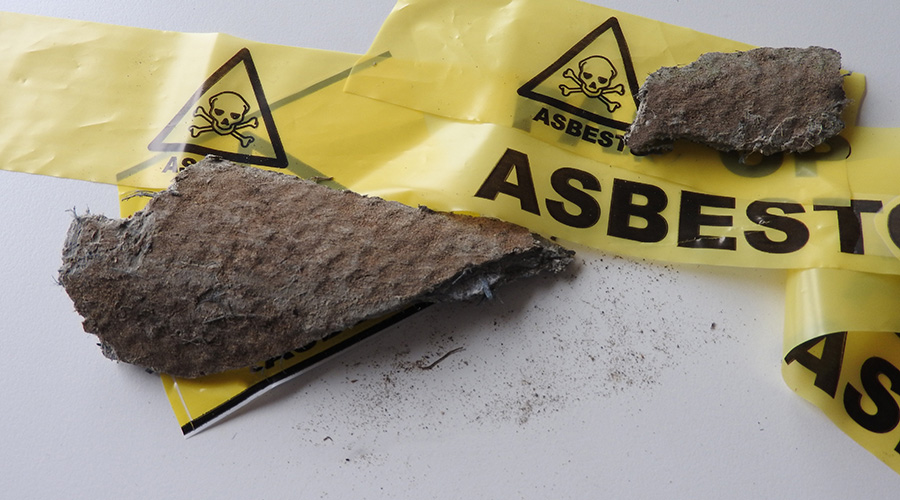Back in Business
September 11 brought chaos to Manhattan, here's how four companies responded, including an in-depth report on a laser communications system
By Charles Buscarino, Jr.
Among the many aftershocks of the attacks of Sept. 11 was the sudden dislocation of hundreds of businesses in lower Manhattan. Even firms fortunate enough to have been spared loss of life found themselves in a desperate, unprecedented situation — scrambling for office space in which to carry on their operations.
One such firm was Cleary, Gottlieb, Steen & Hamilton. Until Sept. 11, this international law firm's New York City operations had occupied seven floors of One Liberty Plaza — directly across Church Street from ground zero. Late in the afternoon of the 11th, it was widely reported that One Liberty itself was in danger of collapse. That report turned out to be false: The building was structurally sound, and occupants actually began to move back in the first week of December. But, in the immediate aftermath of the attack, Cleary was homeless and seemed likely to remain so for an indeterminate number.
Unconnected Islands
Like many other displaced firms, Cleary benefited from the incredible generosity extended by others, including its business rivals. By the beginning of the following week, Cleary had lined up emergency workspace for its approximately 1,100 New York employees, much of it in offices belonging to competing law firms.
Cleary also benefited from its managers’ own foresight: In the wake of the first attack on the World Trade Center — the bombing of early 1993 — the firm had set up a business continuity/disaster recovery center in the Citigroup Building in midtown Manhattan. In the intervening years, that space had served as a conference center, but it was kept ready to be rapidly converted, in the event of an emergency, into an administrative center that was capable of housing the firm’s core functions.
So far, so good. The problem (and it was a very thorny problem indeed) was that office space alone was not sufficient for carrying on the operations of a contemporary business. Equally essential is connectivity — the ability of human beings and information systems to communicate seamlessly, both within an organization and with the outside world. That point may seem obvious, but, because contemporary communications systems generally function so well, it may be hard for those who were not in New York City in the weeks following the WTC catastrophe to grasp just how tough a fix Cleary found itself in.
Ultimately, Cleary temporarily relocated into nine locations in seven different midtown buildings, which ranged, geographically, from Seventh Avenue and 52nd Street at the southwest, to Third Avenue and 55th Street at the northeast. (An eighth building, the Paine Webber Building, was used as the “bounce” site, as explained below.)
Communications-wise, these locations were unconnected islands. What’s more, the communications capabilities that were already in place differed considerably from site to site. Some offices had PBXs that Cleary could utilize; others did not. Some had existing cabling that Cleary could use for its own LANs; other spaces were more or less infrastructure-free.
To make matters even more difficult, the local carrier, Verizon, was unable to give Cleary any immediate help in providing voice-data connectivity among these diverse locations. That’s quite understandable. At the time, Verizon was swamped, attempting to repair the massive damage to its installations in lower Manhattan and, simultaneously, to set up communications services for the numerous law enforcement and relief agencies that had arrived in New York to work on the criminal investigation and disaster recovery efforts.
“We were trying to become as operational as we would have been at our headquarters,” explains Cleary’s facilities director, Tony Amaturo, “but it felt like we were in a black hole with only a very small pinpoint of light.”
The task was monumental: evaluating communications capabilities at all the sites, finding a way to connect them, designing the system, and coordinating the enormous procurement and installation effort. The job of evaluating the locations began on Tuesday, Sept. 18. The goal was to come up with a solution and complete work by the following Monday so that Cleary could occupy its new offices on Tuesday the 25th.
The Solution: Lasers
It wasn’t until 3 p.m. on Friday, Sept. 21, that the consulting engineering firm hired for the project received authorization to proceed with the implementation of its design. The plan: to use lasers to connect Cleary’s offices.
Because the crisis made use of the city’s existing communications infrastructure impossible, the engineers quickly decided to “take to the skies,” betting that a series of infrared lasers — with beams that could be made to carry voice and data transmissions from one building to the next — would accomplish the goal of connecting the various sites. The overall system, of course, comprised many other elements — routers, LAN switches, PBXs (where these were not already in place), telephones and application servers, etc.— that had to be hurriedly assembled and installed. Given the time constraints and the need to coordinate the effort of numerous vendors, integrators and contractors, that job was herculean. What makes Cleary’s story noteworthy and technologically innovative, though, is the integration of the lasers (made by Lightpointe) and radio frequency transmission mediums (Cisco) with DSP voice technologies (Cisco) utilizing Fast Ethernet transport protocols, as well as the project management effort required to keep the installation on schedule.
The engineering firm’s enthusiasm for laser technology was grounded in its own experience: just a few months before, the engineering firm had implemented a laser system to provide a high-speed, wide-bandwidth data connection between its two New York City offices, which are located about a block from one another on the west side of Midtown. That point-to-point system is, however, much smaller in scale than the one implemented for Cleary, which may represent the first use of lasers to achieve a redundant, non-terrestrial, multisite network that merged voice and data on the same connection.
Technical Challenges
The Cleary system worked very well. Cleary facility director Amaturo describes it as a “lifesaver that was thrown into the water and brought us to shore.” That does not mean, however, that its implementation was entirely problem-free. The most obvious limit on such a system’s use is that lasers require an unobstructed line of sight between one location and the next. Cleary had made arrangements for numerous sites, and, once surveyed by engineers, the sites were accepted or rejected based on line-of-sight capabilities, existing infrastructure and other criteria. In only one case did line of sight prove impossible to achieve. To compensate, space for a laser and radio frequency installation site was found in yet another firm’s photocopying room, and that room became a “bounce” site where the signals between the two endpoints that could not “see” one another were tied together.
Line of sight is only one of the factors influencing whether lasers will work. The Lightpointe lasers’ 155-megabit bandwidth — equivalent to about a hundred T-1 lines — was more than needed to carry all of Cleary’s voice and data communications between sites. But the signal strength degraded when the infrared beam was shot through the high-quality, energy-efficient glass used in the Citigroup Building. In all the locations, the lasers had to be positioned inside office windows. Arranging for placement on building exteriors or roofs was either impossible or would have added to the implementation time.
In virtually every case, however, the degree of degradation was slight enough to be inconsequential. It should be noted that the lasers’ bandwidth never diminishes, even when signal strength degrades. In only one place, between the Citigroup Building and 150 East 52nd, where the angle between two lasers’ positions was especially sharp, was the degradation of the signal so significant that lasers were inoperable. Lasers can also be disabled by exceptional weather conditions that would impede human vision, such as blindingly heavy snow or pea-soup dense fog. Such conditions were only a very remote possibility, but, to be absolutely certain that the system would function continuously, a backup system was also a necessity.
That backup was provided by radio frequency (RF) transceivers that were installed alongside the lasers and that were instantly activated whenever one of the Cisco routers detected a laser failure. (In the case where the angle between transmission and reception points was too great for lasers, only the RF connections were used.)
There was one limitation to this wireless backup. Although this system supplemented each laser with three RF transceivers capable of conveying a total of 33 megabits of information, making certain that Cleary could maintain continuous data connectivity throughout the network, it could not be used for redundant voice transmission. In reality, this limitation only affected the system’s backup interoffice voice connectivity and was unnoticeable.
A Promising Technology
The Cleary story aptly illustrates the usefulness of lasers in an emergency situation where it simply isn’t possible to establish high-speed connectivity by any of the usual means. But the appeal of lasers for many kinds of applications, both interim and permanent, is growing because of the technology’s falling cost, increasing bandwidth and ever-greater stability.
A point-to-point system providing more than 100 megabits per second of bandwidth might now cost as little as $25,000 installed. That begins to look like a bargain considering that a carrier might charge as much as $400 per month for a single T-1 line that provides just a fraction of that capability. If an organization requires several T-1 lines to handle the data traffic flowing back and forth between two locations — assuming, of course, that those locations have line-of-sight accessibility between them — the payback time can be extremely short.
As costs fall, lasers are being recommended as interim measures to connect locations where the installation of a “dark fiber” — fiber for which the transmission equipment is provided by the user, as opposed to a carrier — is expected to take many months or where the costs of doing so are prohibitive. (If the fiber is installed, the laser system can remain in place, serving as redundant backup.)
Lasers also make sense where locations are separated by natural or man-made obstacles that make a fiber connection difficult or prohibitively expensive — where, say, a river or a highway runs between the two sites.
Man-made obstacles aren’t just of the physical kind. In some areas, the bandwidth an organization needs might simply outdistance what the local carrier is able to provide. And in densely built urban settings, arranging for the local carrier to do the work necessary to establish a high-speed connection between physically separate offices can be a long-term and costly as well as frustrating proposition. In either case, it might make sense to consider a laser connection — as it might in a very remote location, where there are no carrier-provided services in place and no plan to install such cabling in the future.
As already mentioned, heavy, blindingly foggy conditions and blizzard-like snows could block laser signals entirely, so prevailing meteorological conditions need to be taken into consideration, as they do with microwave systems, which are negatively affected by rain. Distance, too, is a limiting factor, though there are lasers now on the market that claim to remain functional up to about 3 miles between transmission and reception points. Stability over distance is, however, being enhanced by some systems in which the lasers are mounted on motor-driven platforms that adjust the beam’s aim, continuously maximizing the signal strength.
So how did Cleary’s story end? All the many vendors, integrators and contractors did their jobs, and, after what in retrospect seems an impossibly frenzied week of activity, Cleary was able to move into all of its temporary offices the next Tuesday, just as planned. The laser/RF system functioned effectively through early December, when it began to be dismantled as Cleary started moving back into its permanent home at One Liberty Plaza.
Charles Buscarino, Jr., is director of Cosentini Information Technologies, the engineering firm that designed the laser system used by Cleary, Gottlieb, Steen & Hamilton; Douglas Smith is senior network systems engineer, and Onorius Vaidean is telecommunications engineer. Cosentini Information Technologies is a division of Cosentini Associates, a Tetra Tech Company.
Efforts to provide basic services dominated lives of managers
Well before the dust settled in Manhattan on Sept. 11, hundreds of people were at work in the area around ground zero trying to get buildings and businesses back up and running. Among them was the staff at Cushman and Wakefield, International, which is responsible for 75 million square feet in the New York metropolitan area.
Like many on that day, Cushman and Wakefield had buildings near and at ground zero. Two of the buildings were right across from the Trade Center and three were within a block. These buildings suffered significant damage, says Joseph C. Wick, managing director, Downtown Asset Services for Cushman and Wakefield. One building lost 1,500 windows. One 50-story building has a 22-story gash in the façade. Another has a 23-story atrium full of asbestos. Some of the buildings Wick and staff haven’t even been able to enter until recently. Some might take two years before they are ready.
The first order of business for most of the buildings in the days following the attack was getting the power on. Many C&W clients in Downtown are data and trading centers with sufficient backup power. Others had insufficient generating capacity, and some had an insufficient amount of stored fuel. Con Edison helped to provide more emergency backup generators, and C&W had signed contracts with fuel suppliers to provide fuel every 24 hours if needed. Despite some delays due to the need to provide police escorts, the fuel kept coming and so did the power.
The loss of steam and telephones, however, continues to plague many of the buildings around ground zero.
Most of New York City is connected to a district heating and cooling system. But the collapse of the Trade Towers did major damage to that system. Con Ed set up two gas-fired boilers for One World Financial and the Mercantile Exchange, but other building owners had to fend for themselves.
“Temporary boilers were put anywhere we could put them, on the sidewalks, on the streets, wherever,” Wick says. “Some are still being used.”
And telephone cables are still draped across the roads, streaming from windows from the Verizon building that housed all the circuits for the area. That building was damaged when Tower 7 collapsed and water and fuel oil flooded its basement.
After the power flowed, the clean up began. Air quality was the biggest issue. Air filters were hard to get, and some had to be manufactured for Wick’s buildings. Even with regular filter changes, all the HVAC components had to be cleaned. Once the environmental cleanup was done, Wick brought in the regular cleaners.
“It was a clean up of monumental proportions,” he says. “Desks, computers, carpets — everything had to cleaned off. Some buildings close to ground zero that we would normally clean at a rate of about 4,000 square feet per hour, I was lucky to be getting 400 square feet per hour.”
The clean up is done, and now it’s back to work, sort of. It took a great deal of effort by Wick and facility managers for the tenants to get the workers back in.
Residual concern and fear still exist, however.
In the days and weeks following the attack, every false fire alarm sent building occupants scrambling to the street, Wick says. The incidence decreased as alarm problems were solved and occupants grew more comfortable. But it still happens, Wick says.
“It doesn’t matter if it’s a false alarm,” he says. “In some high-rise buildings, an alarm might go off on the upper floors, and everyone heads out. And even though the lower floors don’t hear the alarm, they hear all the people leaving and they bolt.”
— David Kozlowski, senior editor
Contingency plans, quick action meant fast return to business
By the time the second plane crashed into the World Trade Center towers, occupants of the One World Financial building, directly adjacent to the Trade Center, were already making their way to safety. Among them were 950 employees of Fidelity Investments, which occupied four floors of One World Financial.
Shortly after One World Financial was evacuated, the two World Trade Center towers collapsed with such a force that they caused extensive damage to One World Financial. The lower floors on two sides of the 40-story, 1.5-million-square-foot building had all the windows blown out, and many of the building’s systems, including the electrical, were destroyed.
But Fidelity’s emergency contingency plan wasn’t just about a successful, orderly evacuation. Between the time the first plane hit the North Tower and the evacuation of One World Financial began, an authorized person for Fidelity was on the phone securing hot space for 300 seats for which the company had contracted in case of an emergency. Even though a number of other companies had contracted for that same space, the space was awarded on a first-call basis, and Fidelity got it. Having the right person authorized to act was key.
In six days, Fidelity Investments had key components of its operations working out of new space. In a couple of weeks, all 950 were in temporary space. By this September, Rob Reilly, vice president of planning and client service management with Fidelity, expects to have all displaced personnel back in permanent space, including space at One World Financial Center. Contingency plans, Reilly says, are everything.
“We declared our need quickly and secured the seats right away,” he says. “Our core New York operations groups — about 275 employees — were in place by the time the stock market opened on Monday.”
In addition to these hot seats, Fidelity still needed to find space for 650 people. The company’s contingency plan was to use Fidelity facilities in New England. Vacant seats, conference rooms and a cafeteria were quickly fitted out for use, Reilly says. That cafeteria was already pre-wired and designed to act as emergency space. “It wasn’t pretty, but it worked,” he says.
By late September, Fidelity had located another facility in New Jersey. It was fitted out by November, and the company moved most of the New England people there. By Thanksgiving, Fidelity had many of its New York employees closer to home.
Reilly expects to have a permanent facility fitted out in Harborside, N.J., early this fall for about half of the people that were in One World Financial. The others will take space again in One World Financial by mid-summer. Splitting up the operation was a decision made before Sept. 11th. When everyone is in permanent space, life will be back to near normal.
But will Fidelity rest on its contingency planning laurels?
“We were extremely well prepared for a typical or traditional outage,” Reilly says. “What we are rethinking is, do we have to go further? And what are the costs of doing this? Are there things we can do to prepare further for a fit out? What’s our appetite for risk? What is the value of a contingency plan?
“You really can’t afford to not have designated space that is ready to go in case of a disaster,” he says. “But what the 11th has told us is you can’t count on a disaster being short term or isolated.”
— David Kozlowski, senior editor
Three blocks from the Towers, hospital kept its doors open
“It was so surreal. Outside the hospital everything was covered with dust so thick it looked like it snowed. The smell was horrendous from the burning fuel and plastic. There were so many Humvees driving down the street carrying National Guard soldiers. It was chaotic.” That was the scene that confronted Michael Rawlings, director of engineering and project executive at NYU Downtown Hospital.
The hospital was only three blocks from complete pandemonium and sheer terror at the World Trade Center. The hospital’s challenge: to keep its doors open.
Within the first few hours, the hospital triaged 320 “very critical patients” with wounds ranging from burns to fractures to cuts. Hundreds more were treated for chest pain, dust inhalation, minor cuts and eye irritation. The hospital, having only 170 beds, admitted about 50 of the 320 critical patients and discharged the rest to outlying hospitals. In the days that followed, the hospital faced daunting obstacles in the struggle to keep its doors open. One challenge was maintaining electric power to run the building.
The hospital’s on-site power generator provided the needed electricity while the main power was out, but, in order to keep running, it needed an almost daily supply of fuel.
“We kept our fingers crossed that our generator wouldn’t fail,” says Rawlings. “When the perimeter that the National Guard made was put up, we were worried that we wouldn’t be able to get fuel for our generator.”
The hospital was able to get fuel to its generator daily thanks to efforts by Consolidated Edison. A fuel truck came by every day to top off the fuel to make sure the supply never ran out.
“Announcements were made to conserve electricity over the fire alarm system’s public address system to both reduce load and conserve fuel for the emergency generator,” says Rawlings. This was only the tip of the iceberg. Several other problems arose quickly.
Maintaining indoor air quality became a serious problem soon after the World Trade Center’s first tower collapsed. Dust was everywhere and being tracked into the hospital as more and more people came in.
Environmental consultants were brought in to help prevent dust from accumulating in the building. To prevent spreading dust throughout the building, the hospital shut off its HVAC system.
“Sheets and blankets were used to filter air used for combustion and cooling, until normal roll filters were obtained,” Rawlings says.
Once the immediate problems began to subside, one problem still remained.
“The biggest challenge we faced was getting our staff to and from work,” Rawlings says. “It was hard to get staff through the perimeter so they could get to work. Doctors and nurses could get through, but we direly needed our housekeeping crew to keep the hospital as clean as could be, and they were being turned away.”
'The main reason why the hospital was able to stay open was because of the staff,” Rawlings says. The hospital’s staff didn’t work without fear of potential failures, though. There was fear that, because the hospital was so close to ground zero, other buildings would collapse on it. There was also fear that the building itself may have been weakened due to the impact of the towers crashing to the ground nearby. Nevertheless, the staff kept working with continued vigil.
“I’m surprised no one put their kids in the car and got the hell out of Dodge. Everyone wanted to get here and do what they could to help. Our staff went to great lengths to get here to provide medical service. Everyone tried to maintain their shifts and we remained operational because of them.”
Related Topics:











